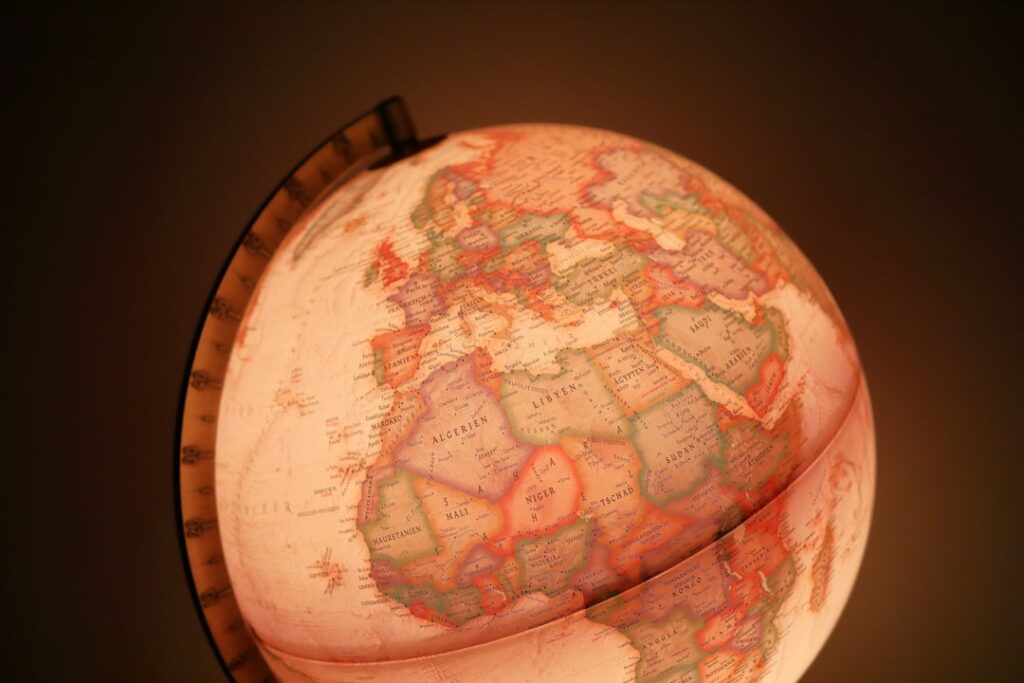In the quest to understand happiness, one must consider the intricate interplay between geography and emotional well-being. “The Geography of Bliss,” a thought-provoking book by Eric Weiner, embarks on a journey across various nations, exploring how culture, environment, and societal structures influence the happiness of their inhabitants. Weiner, a self-proclaimed grump, sets out to discover what makes people in different parts of the world content or discontent.
His travels take him from the serene landscapes of Bhutan, where Gross National Happiness is prioritized over economic growth, to the bustling streets of Denmark, often cited as one of the happiest countries on Earth. Through his narrative, Weiner not only shares his personal experiences but also delves into the broader implications of happiness as a cultural construct. The book serves as a compelling reminder that happiness is not merely an individual pursuit but is deeply rooted in the social fabric and geographical context of a place.
Weiner’s exploration raises essential questions about the nature of happiness itself: Is it a universal state of being, or is it shaped by local customs and traditions? By examining various cultures and their unique approaches to happiness, Weiner invites readers to reflect on their own lives and consider how their environment influences their emotional well-being. This exploration sets the stage for a deeper understanding of happiness as a multifaceted concept that transcends borders and cultures.
Key Takeaways
- The Geography of Bliss explores the connection between geography and happiness, taking readers on a journey to different countries to understand what makes people happy.
- The search for happiness is a universal human pursuit, but the definition and factors contributing to happiness vary across cultures and societies.
- Exploring different cultures and their impact on happiness reveals that factors such as social connections, sense of purpose, and work-life balance play a significant role in shaping happiness.
- Geography plays a crucial role in shaping happiness, with factors such as climate, natural beauty, and economic stability influencing the well-being of individuals and communities.
- Lessons learned from different countries highlight the importance of embracing diversity, finding balance, and prioritizing relationships and experiences over material wealth for a happier life.
The Search for Happiness
The search for happiness is a universal endeavor, yet it manifests differently across cultures and individuals. In many Western societies, happiness is often equated with material success and personal achievement. The relentless pursuit of wealth, status, and possessions can lead to a paradox where individuals find themselves feeling unfulfilled despite their accomplishments.
In contrast, cultures that prioritize community and relationships often report higher levels of happiness. For instance, in countries like Costa Rica, where social connections are valued over material wealth, people tend to experience a greater sense of well-being. Weiner’s journey highlights the importance of understanding what happiness means in different contexts.
In Bhutan, for example, the government has implemented policies that prioritize Gross National Happiness (GNH) over Gross Domestic Product (GDP). This unique approach emphasizes sustainable development, cultural preservation, and environmental conservation as key components of societal well-being. The Bhutanese perspective on happiness challenges conventional notions that equate success with economic growth, suggesting instead that true contentment arises from a harmonious balance between individual needs and collective welfare.
Exploring Different Cultures and Their Impact on Happiness

Cultural influences play a significant role in shaping perceptions of happiness. In Scandinavian countries like Denmark and Sweden, the concept of “hygge” embodies a sense of coziness and contentment derived from simple pleasures. This cultural ethos encourages individuals to appreciate the small moments in life—whether it’s enjoying a warm cup of coffee with friends or taking a leisurely walk in nature.
The emphasis on community support and social safety nets in these countries contributes to a high level of trust among citizens, fostering an environment where happiness can flourish. Conversely, in cultures where individualism is celebrated, such as in the United States, the pursuit of personal happiness can sometimes lead to isolation and disconnection. The pressure to achieve personal goals can overshadow the importance of community ties and shared experiences.
Weiner’s exploration reveals that while individual achievements are important, they are often enhanced by strong social networks and a sense of belonging. By examining these cultural differences, readers can gain insights into how their own cultural backgrounds shape their understanding of happiness and well-being.
The Role of Geography in Shaping Happiness
Geography plays a crucial role in determining the factors that contribute to happiness. Natural landscapes, climate, and urban design can significantly influence people’s moods and overall well-being. For instance, countries with abundant natural beauty—such as New Zealand or Switzerland—often report higher levels of life satisfaction.
Access to green spaces, clean air, and scenic views can enhance mental health and promote outdoor activities that foster social connections. Urban environments also present unique challenges and opportunities for happiness. In densely populated cities like Tokyo or New York, the fast-paced lifestyle can lead to stress and anxiety.
However, these cities also offer diverse cultural experiences and opportunities for social interaction that can enhance well-being. Weiner’s observations underscore the importance of considering how geographical factors intersect with cultural practices to create distinct experiences of happiness. By recognizing these dynamics, individuals can better understand how their surroundings impact their emotional states.
Lessons Learned from Different Countries
Throughout his travels, Weiner uncovers valuable lessons about happiness from various countries. One notable example is the emphasis on work-life balance in countries like Sweden and Norway. These nations prioritize policies that allow for ample vacation time and parental leave, recognizing that time spent with family and friends is essential for overall well-being.
This approach contrasts sharply with cultures that glorify overwork and long hours, often at the expense of personal relationships. Another lesson comes from the communal practices observed in countries such as Ghana, where social gatherings and shared meals are integral to daily life. The sense of community fosters strong bonds among individuals, creating a support system that enhances resilience during challenging times.
Weiner’s exploration highlights that happiness is not solely an individual pursuit; rather, it thrives in environments where people come together to support one another. By learning from these diverse practices, individuals can adopt strategies that promote connection and fulfillment in their own lives.
The Connection Between Environment and Well-being

The connection between environment and well-being is increasingly recognized in contemporary discussions about mental health and happiness. Research has shown that exposure to nature can have profound effects on psychological health. For example, studies indicate that spending time in green spaces can reduce stress levels, improve mood, and enhance cognitive function.
Countries that prioritize environmental conservation often see positive outcomes in terms of citizen well-being. Weiner’s journey emphasizes the importance of creating environments that nurture happiness. In cities where urban planning incorporates parks, recreational areas, and pedestrian-friendly spaces, residents tend to report higher levels of life satisfaction.
Conversely, areas plagued by pollution or lack of access to nature may contribute to feelings of discontent and anxiety.
Applying the Principles of The Geography of Bliss to Everyday Life
The insights gleaned from “The Geography of Bliss” can be applied to everyday life in meaningful ways. One key principle is the importance of fostering social connections. Individuals can prioritize spending time with family and friends, engaging in community activities, or volunteering for local organizations.
These interactions not only enhance personal well-being but also contribute to building stronger communities. Another principle involves cultivating gratitude and mindfulness. By taking time each day to reflect on positive experiences or express appreciation for simple pleasures, individuals can shift their focus away from stressors and cultivate a more positive outlook on life.
Practices such as journaling or meditation can help reinforce this mindset shift. Additionally, individuals can seek out environments that promote well-being—whether through spending time in nature or creating inviting spaces at home that encourage relaxation and connection with loved ones.
Conclusion and Reflections on the Pursuit of Happiness
The pursuit of happiness is a complex journey influenced by myriad factors ranging from culture to geography. “The Geography of Bliss” serves as a poignant reminder that happiness is not a one-size-fits-all concept; rather, it is shaped by individual experiences within specific cultural contexts. As Weiner’s travels illustrate, understanding the diverse ways in which different societies approach happiness can provide valuable insights into our own lives.
Ultimately, the quest for happiness requires introspection and an openness to learning from others. By embracing the lessons learned from various cultures—whether it be prioritizing community connections or appreciating the beauty of nature—individuals can cultivate a deeper sense of fulfillment in their lives. The geography of bliss is not merely about physical locations; it encompasses the emotional landscapes we navigate as we seek joy and contentment in an ever-changing world.
In “The Geography of Bliss,” Eric Weiner embarks on a global journey to discover the happiest places on Earth, blending travel, psychology, and humor. A related article that delves into similar themes of happiness and cultural exploration can be found on Hellread. This article, titled “Hello World,” explores the nuances of happiness across different cultures and how geography can influence our sense of well-being. For more insights, you can read the full article by following this link: Hello World.
FAQs
What is “The Geography of Bliss” by Eric Weiner about?
“The Geography of Bliss” is a book by Eric Weiner that explores the relationship between geography and happiness. Weiner travels to various countries around the world to investigate what makes people happy in different cultures and how geography and culture play a role in shaping happiness.
What are some of the countries Eric Weiner visits in “The Geography of Bliss”?
In “The Geography of Bliss,” Eric Weiner visits countries such as Switzerland, Bhutan, Qatar, Iceland, Thailand, and the United States to explore the concept of happiness and how it is influenced by different cultural and geographical factors.
What are some of the key themes in “The Geography of Bliss”?
Some of the key themes in “The Geography of Bliss” include the cultural differences in the pursuit of happiness, the impact of geography on well-being, the role of government and societal structures in fostering happiness, and the concept of subjective well-being.
What are some of the insights Eric Weiner gains from his travels in “The Geography of Bliss”?
Through his travels, Eric Weiner gains insights into the different cultural attitudes towards happiness, the impact of social connections and community on well-being, the role of personal freedom and autonomy in happiness, and the ways in which individuals and societies can cultivate happiness.
How does “The Geography of Bliss” contribute to the understanding of happiness and well-being?
“The Geography of Bliss” offers a unique perspective on happiness by examining how cultural, geographical, and societal factors influence well-being. By exploring the experiences of different countries, Eric Weiner provides valuable insights into the diverse ways in which people find happiness around the world.







